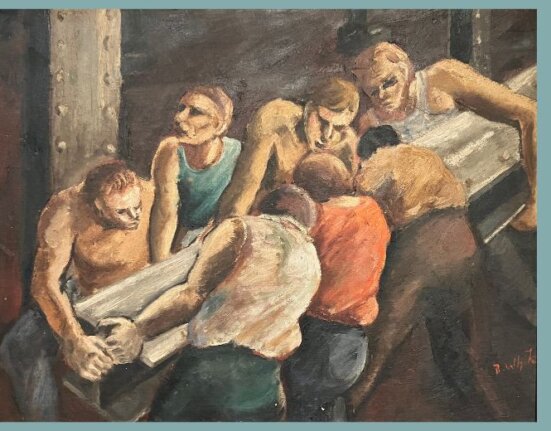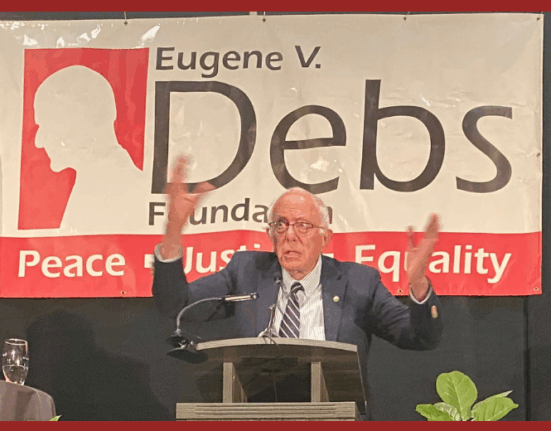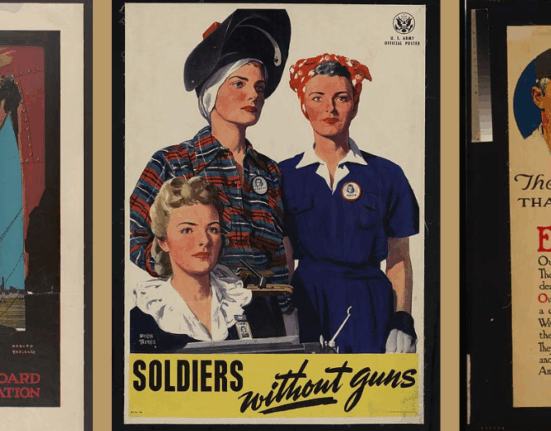This May I attended the commencement ceremony for a young cousin who was one of 117 graduates from an overwhelmingly black charter high school in a south suburb of Chicago. Launched in 2010, the school – which I will dub “South Charter High” – was the brainchild of black educators, and working-class and middle-class parents, a fair share of them former Chicagoans displaced from the city by urban redevelopment and a skyrocketing cost of living. Many of them newly suburbanized, they resolved to create an alternative for their children to the low test scores, rampant suspensions and dropout rates plaguing area high schools and feeding a national prison pipeline. With an enrollment capped at approximately 500 students, South Charter High boasts a technologically rich curriculum envisioned as the cornerstone of a “21st century education.” Yet, the school also has an equally robust humanities program, which was on impressive display during the commencement’s band, choir and dance performances. Among other similar accomplishments, students won state at the Illinois High School Association’s drama and group interpretation competition.
Since its creation, South Charter High has been a subject of favorable media coverage for a perfect record of graduating all of its seniors, each of whom has been accepted into institutions of higher learning. To be sure, their choices have ranged widely among for-profit schools, community colleges, public flagship universities, historically black institutions, and elite Ivy League institutions (One graduate of this year’s class opted for the military.) Nevertheless, many graduates have been awarded merit-based scholarships cumulatively totaling double-digit millions of dollars. For her leadership, the South Charter High’s unpaid CEO – who also is superintendent of an inner-ring south suburban public school district – has been compared to trailblazing black female public figures like Rosa Parks and Marva Collins, founder of Chicago’s pioneering Westside Preparatory School. A seasoned administrator with decades of experience in Chicago public schools, she has been an Illinois Association of School Administrators Superintendent of the Year and a recipient of the Ida B. Well Risk Taker Award from the National Alliance of Black School Educators. Last year, the same organization awarded the school’s college counselor with its W.E.B. Du Bois Higher Education Award for his achievements not only in getting youth of color admitted into institutions of higher learning but also helping them fund their post-secondary education.
Needless to say, I had been thrilled for my young relative and his mother when he had been one of the few to gain admission to South Charter High through its open lottery process. Although I had been aghast when I learned that the school day began at 8 am and ended at 5 pm (“That’s a job, not school!” I remember exclaiming), I was proud all the same that he had made the best of the opportunity. During the epic-length graduation exercise, however, I found myself wrestling with complicated feelings as a scholar of labor, black community, and social movements; and as a parent who has been engaged in the tumultuous politics of his local public school district.
To be clear, I am fundamentally opposed to the charter school movement. Foremost, it is part of a neoliberal mode of governance that privatizes the public sphere, deregulates capital, and reorders society around market-based principles. These developments dismantle the idea of the public, and with it the expectation of collective responsibility for the public good. Government is declared inefficient, especially in its delivery of social welfare provisions – even as unrestrained capitalism drives the economy from one financial calamity to another. Human dignity is denigrated, and democratic rights are scaled back in the name of immediate use-value and choice. With the appointment of Betsy DeVos to the post of U.S. Secretary of Education, the Donald Trump presidency is poised to divert an unprecedented amount of energy and resources toward expanding various “school choice” schemes that the Michigan billionaire has devoted her public life to championing. Through her support for the odious principle of “states’ rights,” and her evasive responses to Congressional questions about her willingness to impose restrictions on private schools benefiting from federal vouchers, DeVos has signaled that her Department of Education will continue to collapse the separation between church and state, in the process sanctioning religious-laden discrimination against racial and sexual minorities, gender non-conforming individuals, and other marginalized populations.
With specific regard to charter schools, they enlist public monies for the educational enrichment of a few, abandoning the majority to a downward-spiraling survival of the fittest. In addition to starving already underfunded public school systems, then, charter schools siphon off the highest achieving students. Such a criticism would not apply to South Charter High, which is sponsored by a local district and relies on a non-selective lottery system for admission. But with a maximum enrollment of a few hundred youth from 27 different feeder schools, its educational benefits are limited and select. This reflects a dim worldview in which necessities like housing, health and education are understood as individual privileges rather than guaranteed social rights. In this paradigm, school superintendents become entrepreneurs, embracing the titles and orientation of corporate executives while envisioning schoolchildren and their guardians as sterile consumers of personalized goods and services.
My related concern about charter schools has to do with their level of transparency and accountability to public oversight regarding expenditures, credentials and curriculum. For instance, the teaching staff of South Charter High is on duty from 8 am to 5 pm; when do they have time and opportunity for adequate course preparation and professional development? Is this daily schedule conducive to teaching students to think critically, rather than training them to receive and recite information from time-strapped instructors? Is this workday even sustainable over the longer term without high staff turnover? And what might this situation reveal more generally about labor protections for the teachers, which their Chicago public school counterparts have fought hard to defend?
In one published profile of the school’s CEO, she boasted that the district where she serves as superintendent routinely hires young alumni of South Charter High during the summers to tutor students and assist maintenance crews with cleaning and repairs. These arrangements were described as reflecting the school’s ethos of “family” and “home,” but they struck me as mildly exploitive. I also imagined that the employment of former students in this manner likely would undercut the stable working conditions of the regular employees. This brought to mind the attack leveled against child labor laws in 2012 by Republican presidential hopeful Newt Gingrich, who – in an obscene gesture of compassionate conservatism – mused about whether poor black youth could be taught the values of hard work by sharing the janitorial, library, cafeteria and office labor of school staff.
A related tenet among charter school advocates is the conviction that what black K-12 students require to be successful, above all, is discipline. Interpreted charitably, the 9-hour day expected of South Charter High students is a nod to teaching models practiced outside the United States, notwithstanding findings from the Pew Center and the Center for Public Education that U.S. schoolchildren do not receive fewer instructional hours than in most other nations. Other researchers have contended that both students and teachers would perform better with shorter school hours and weeks, which evinces that the real issue is the quality of classroom instruction, not the length of the school day. But I suspect that in the case of South Charter High, imposing a longer day on students comes from a presumption that black youth pose a latent threat to one another and society, and that the best way to keep them out of trouble is to contain them “off the streets.” I would venture, similarly, that even the school’s chic uniforms echo a desire to subject black children and youth to forms of regimentation.
All of that said, I found it impossible to resist being swept into the excitement and joy of watching my cousin and the larger procession of young college-bound black graduates walk across the auditorium stage to receive their high school diplomas. Among them were South Charter High’s predominantly black board of directors, leadership team, and faculty and staff, all similarly adorned in full scholastic regalia. Family members and friends snapped photos, cried, and cheered their graduates’ names, casually ignoring stuffy appeals from the CEO to hold their applause to the end. This gorgeous spectacle of black people celebrating that they had given their children the best possible education that circumstances allow mocked the persistent lie that African American communities do not appreciate the importance of education and the pathways to success it opens. If anything, the ceremony leaned too heavily on American exceptionalist rhetoric, ill timed at a moment when racialized police violence, mass incarceration, and the presence of a U.S. presidency shaped by resurgent white supremacy refute black citizenship claims. This is not to deny South Charter High’s attempts at culturally relevant material, however: During the academic year, the school arranged a screening of “Hidden Figures,” the Oscar-nominated film about the real-life black female mathematicians involved in the early U.S. space program, and advanced math classes explored the women’s calculations.
Contrast this with the quality of education for black children and teenagers in the public schools of Lawrence, Kansas, the university town where I reside. In this self-styled liberal enclave harboring the University of Kansas, African American students (who make up 6.5 percent of the school district’s population) are underrepresented in “gifted” and honors courses yet overrepresented in disciplinary referrals and more likely than whites to be identified as learning disabled. African Americans in the district are largely disengaged from school extracurricular activities, and their high school graduation rates are lower than that for white and Hispanic students. Far from being an anomaly, racial achievement gaps in education are a pervasive fact of life in college towns like Berkeley, California; Ann Arbor, Michigan; Evanston, Illinois; and Chapel Hill, North Carolina. As a recent story (“The College-Town Achievement Gap”) in The Atlantic by Erik Gleibermann suggests, university towns concentrate highly educated, well salaried residents with social capital and an equally strong sense of entitlement. Given the racial exclusion practiced by faculty, staff, and executives at the institutions of higher learning employing them, their presence actually fortifies community-wide patterns of stratification, much of it premised on the tacit understanding that the absence of people of color in neighborhoods and schools is a mark of high quality. This easily lends itself to competitive advantages for white K-12 students and disadvantages for students of color.
Relative to their black working-class peers, black middle-class parents are able to acquire private education for their children, which can have its own deficits in terms of racially diverse and supportive environments. This privilege is qualified in other ways, too, for middle-class and professional African Americans, who lag well behind their white counterparts in terms of average household income and wealth. That is, private school tuition becomes an additional economic burden that middle-class African Americans shoulder in order to provide their students with the educational opportunities that white middle-class families are able to anticipate through segregated tracks in public schools. As elsewhere, black students in Lawrence public schools also experience racial insults, micro-aggressions, and harassment from white peers, teaching staff, administrators, and school resource officers. The district’s officials, also disproportionately white, similarly have come under fire for diverting scrutiny from these rampant abuses.
In the fall of 2016, these festering grievances in Lawrence culminated in disruptive school board meetings when a small contingent of black working-class parents, and assorted activists and allies, confronted the superintendent and all-white board about an incident involving a middle school teacher who students alleged had denigrated African Americans in class (Another concerned parent had exposed a different white teacher, at the same school, who had a display of Confederate paraphernalia in his office.) Activated by the crisis, the Lawrence branch of the National Association for the Advancement of Colored People entered the conflict, and members of the branch’s education committee – of which I have been a member – held meetings with the superintendent, the president of the school board, and others. District officials neutralized protesters by threatening police arrests, and they pacified concerns by launching parent and community equity committees, organizing a poorly conceived public forum that evaded a discussion of racial disparities, and appointing a black woman to fill a “diversity gap” on the school board when one sitting member resigned. Board members and staff also have politely lectured the public about running for the school board, subtly deflecting blame from their own questionable decisions and trivializing the assorted ways that community members have contributed their labor to the work of the school district. Meanwhile, the superintendent, for whom rowdy grassroots dissent was more than he had bargained for when he took the job, decided to step away from the position after only a year in the role. Congratulating themselves for already having diversity plans and training workshops in place or in the works, board members have redoubled their stated commitment to making all students feel welcomed and valued. It remains to be seen, however, whether this pledge will extend to meaningfully improving the concrete structures of educational opportunity in the district for students of color.

As a social movement scholar, I fervently believe that black parents and other concerned Lawrence residents should continue to lobby and fight to make the school district responsive to reformist demands. At the same time, I am painfully aware of the fact that the time that youth spend in elementary, middle and high school is short but incredibly formative of the rest of their entire lives. Hence, black communities do not have the luxury of gradual or piecemeal reform. I fear, as well, that the seeming complacency with race-based inequalities in education stems from a perception among white liberals and conservatives alike that black people are not sufficiently motivated, or able, to excel academically. Seated at my cousin’s graduation in an auditorium bursting at the seams with African Americans jubiant over sustaining an independently operated school, I could not help contemplating whether black Lawrencians might not benefit from drawing from this same long tradition of black self-determination to build a similar academy to serve their children and themselves.
It is noteworthy that DeVos has received scornful responses from black audiences when she has praised historically black colleges and universities as “real pioneers when it comes to school choice.” Their reaction demonstrates that many African Americans recognize the education secretary’s move as an erasure of the history of U.S. racial apartheid that made HBCUs necessary, not to mention a sleazy ploy to graft noble legacies of black institution-building onto contemporary white libertarian politics. But it is also the case that school choice efforts have resonated powerfully with both working-class and bourgeois strains of Black Nationalism. In the former instance, advocates have been inspired by the promise of improving their lives in areas where the state has proved unable or unwilling to develop solutions. In the latter, supporters have been fueled by an ages-old ambition to give stewardship to the educational uplift of the untutored black mass majority. Indeed, “school choice” is a snake oil remedy to the problem of unequal schooling; still, it would be an error to underrate its sway among cross-class segments of the black public.
The sordid reality is that quality education does not exist for African American communities; and while the dilemma is most acute for working-class and poor families, it pertains to black households across class lines. With the 2016-2017 school year giving way to summer, I am dreaming of success for the recent graduates of South Charter High. In the fall, many of them will be heading to predominantly white institutions of higher learning that have become teeming cauldrons of struggle for educational equity and inclusion since 2015, when events at the University of Missouri inaugurated a wave of black-led campus protests. As someone who teaches at one such university touched by this upsurge, I worry whether these students’ destination will, or even can, provide them with a healthy campus environment conducive to their retention, safety, and scholarly attainment. For the students of color in the elementary, middle and high schools of Lawrence, I am just as fervidly visualizing a public school system that yields equitable outcomes rather than just a cataloging of formal pronouncements and strategic plans. However, the level playing field that this demands likely would foster resistance among a local white majority anxious about losing its favored standing in a zero-sum game of power and privilege. For this reason, equity and inclusion in the area of education – as in other quality-of-life matters affecting black communities – will necessitate self-organization and grassroots mobilization on the part of people of color. And forms of independent institution building should be part of the range of options we dare to imagine.







